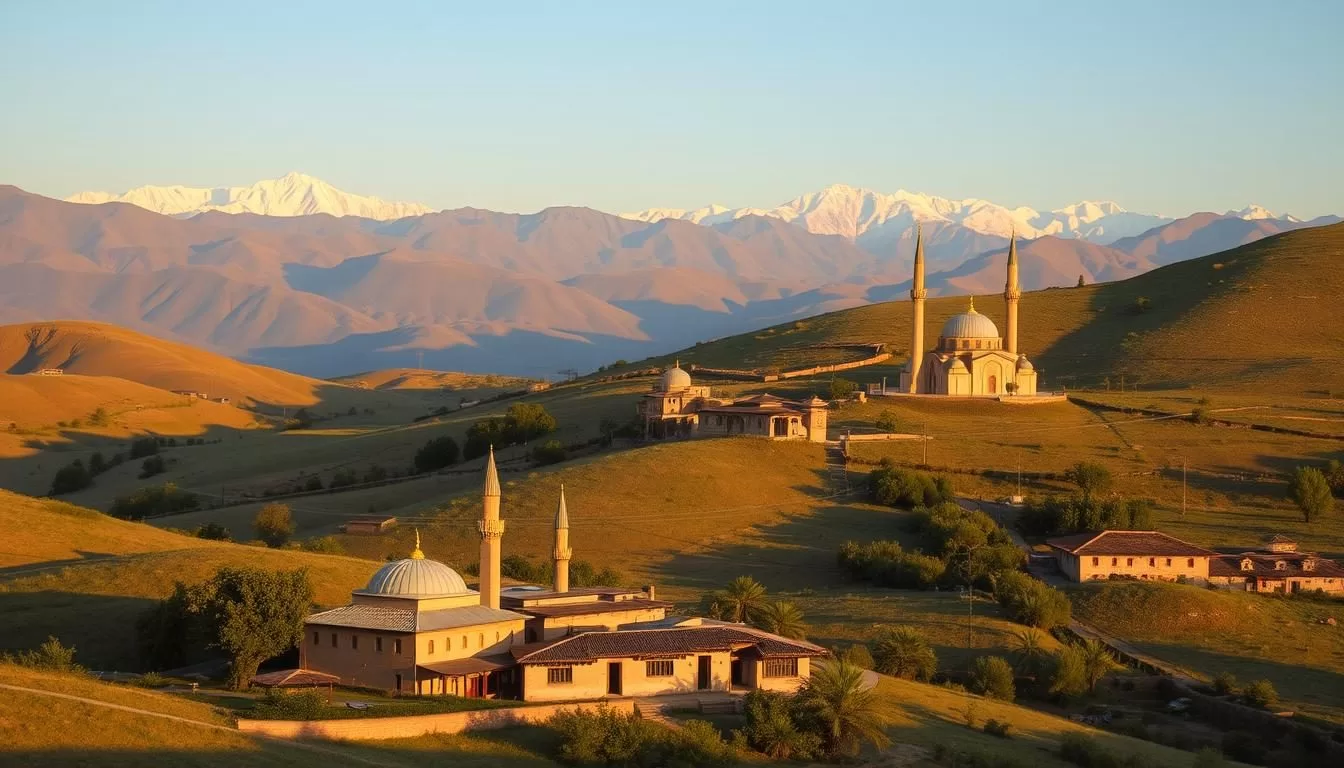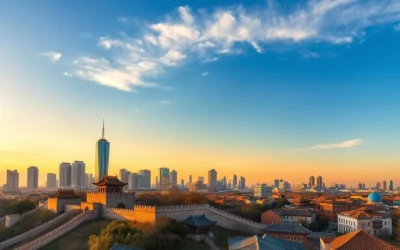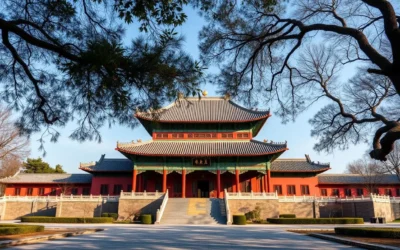✓ Accommodations✓ Flights✓ Rental Cars
Welcome to a fascinating journey through the Ningxia Hui Autonomous Region. Located in northwestern China, this area is known for its rich cultural heritage and diverse population. You’ll discover why this region stands out as a unique blend of history, tradition, and modernity.
With a population of over 7.2 million people, the region is home to a mix of ethnic groups, including the Han and Hui communities. The government plays a key role in maintaining its cultural identity and promoting growth. Established in 1958, it has since become a symbol of unity and progress.
From its capital, Yinchuan, to its vast vineyards and historical canals, the area offers a glimpse into its vibrant past and thriving present. Whether you’re curious about its linguistic diversity or its economic achievements, this introduction sets the stage for a deeper exploration.
Exploring Ningxia’s Rich Linguistic Heritage
Uncover the historical roots of the linguistic diversity found here. This area’s language reflects its diverse history, shaped by centuries of cultural exchange and migration. From ancient scripts to modern dialects, the story of its linguistic evolution is both fascinating and complex.
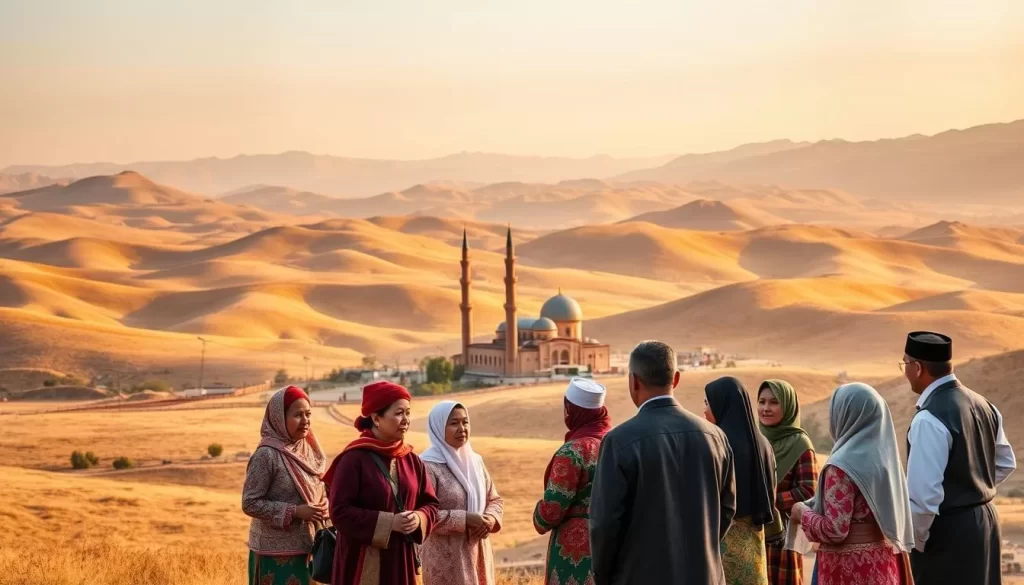
Historical Background and Regional Formation
The history of this area spans thousands of years, with human habitation dating back approximately 30,000 years. It was once part of Gansu Province before becoming an independent province in 1929. The establishment of the Western Xia dynasty marked a significant era, introducing the Tangut script and other traditional languages.
Key events, such as the Mongol conquest, further shaped the region’s linguistic landscape. These historical transitions laid the foundation for the diverse dialects spoken today.
Cultural Influences Over the Centuries
Cultural influences from Muslim settlers and the Tangut people played a crucial role in shaping the local language. The Hui ethnic group, representing about 30% of the population, primarily speaks Mandarin but also uses a dialect with Arabic and Persian influences.
Over 300 mosques across the region serve the Hui community, highlighting the deep connection between culture and language. Festivals celebrating these traditions attract thousands of visitors annually, showcasing the vibrant linguistic and cultural diversity.
“Language is the road map of a culture. It tells you where its people come from and where they are going.”
| Historical Period | Key Influence |
|---|---|
| Western Xia Dynasty | Introduction of Tangut script |
| Mongol Conquest | Shift in linguistic patterns |
| Modern Era | Integration of Mandarin and Hui dialect |
Ningxia Hui Autonomous Region, China: Official and widely spoken languages
Explore the official languages and dialects that define this vibrant area. The linguistic landscape here is shaped by a mix of historical influences and modern policies. Standard Chinese, also known as Putonghua, serves as the primary language, supported by government initiatives to promote unity and communication.
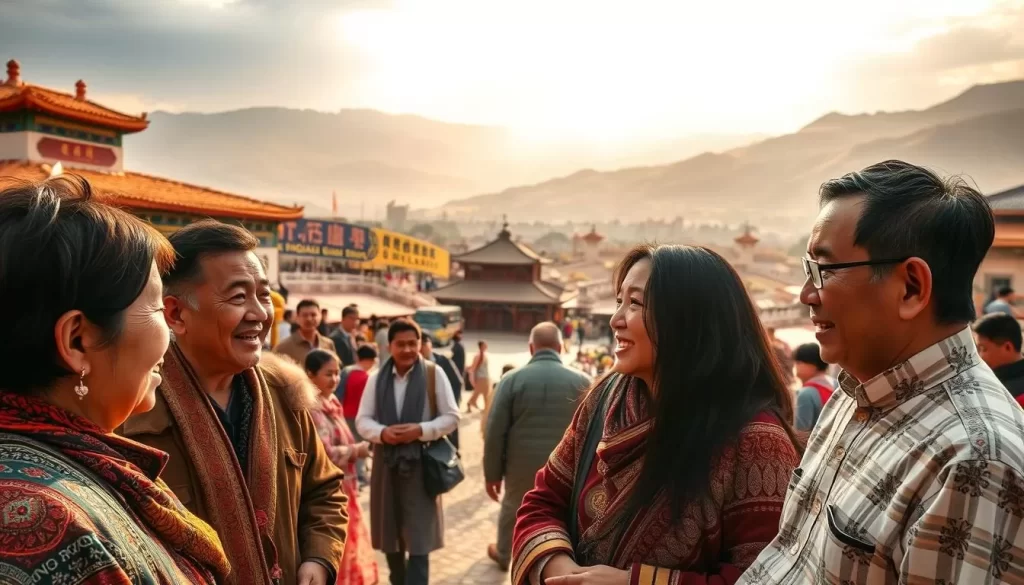
Overview of Official Languages and Dialects
Standard Chinese is the cornerstone of communication, widely used in education, media, and government. The provincial government has implemented policies to ensure its adoption across all communities. This focus on linguistic unity supports economic and social development.
Local dialects, such as Lanyin Mandarin and Central Plains Mandarin, add richness to the region’s linguistic identity. These dialects are often used in daily conversations, reflecting the area’s cultural diversity.
Key Regional Variations and Local Speech
Dialects vary across the province, influenced by geography and history. In rural areas, traditional speech patterns remain strong, while urban centers lean toward Standard Chinese. This blend of old and new creates a unique linguistic environment.
Educational programs play a crucial role in preserving local dialects while promoting Standard Chinese. Schools teach both, ensuring students are fluent in the national language while retaining their cultural heritage.
| Language/Dialect | Usage |
|---|---|
| Standard Chinese | Education, media, government |
| Lanyin Mandarin | Daily conversations in rural areas |
| Central Plains Mandarin | Cultural and community events |
Historical Influences Shaping Ningxia’s Languages
Discover how ancient scripts shaped the linguistic identity of this region. Over centuries, the written language evolved through cultural exchanges and political shifts. This transformation reflects the area’s rich history and diverse influences.
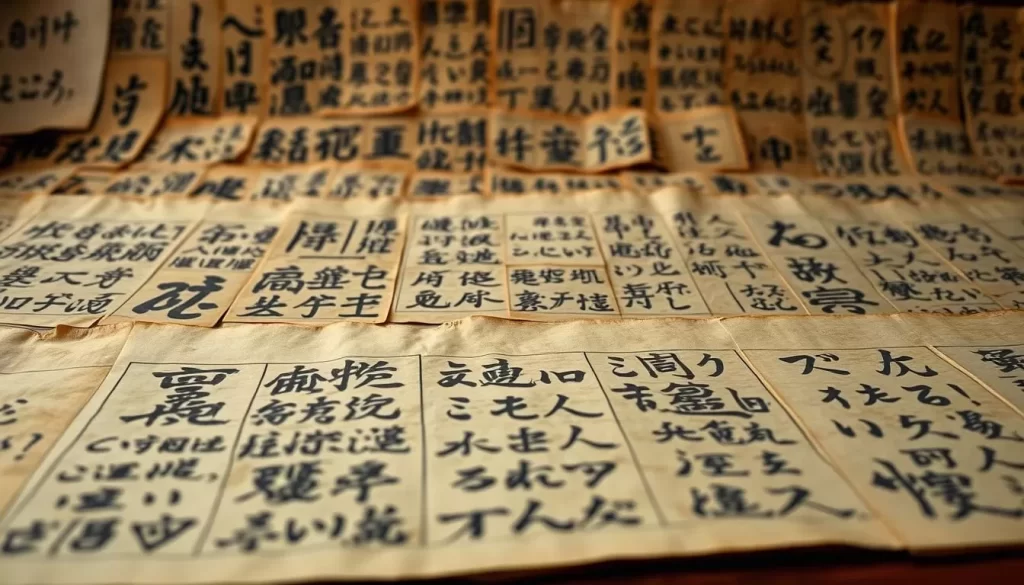
From Tangut Script to Traditional Characters
The Tangut script, introduced during the Western Xia dynasty, was a cornerstone of early written communication. This unique system of characters was used for official documents and religious texts. Over time, interactions with neighboring regions, including Inner Mongolia, brought new writing systems into the mix.
Political changes, such as the Mongol conquest, led to the adoption of traditional Chinese characters. This shift marked a turning point in the region’s linguistic history. The integration of these characters into daily life was gradual but impactful.
Cultural exchanges also played a role. The Hui community, with its Arabic and Persian influences, added another layer to the linguistic variety. This blend of scripts and characters created a unique written language that continues to evolve today.
“Writing is the painting of the voice.”
Today, traditional characters dominate, but the legacy of ancient scripts remains. This blend of old and new is a testament to the region’s enduring cultural richness. Understanding this evolution offers insight into the people’s identity and heritage.
Government Policies and Language Development
Understanding the role of government policies in language development offers valuable insights into the region’s cultural and educational landscape. These policies aim to balance linguistic diversity with national unity, ensuring both local dialects and Standard Chinese thrive.
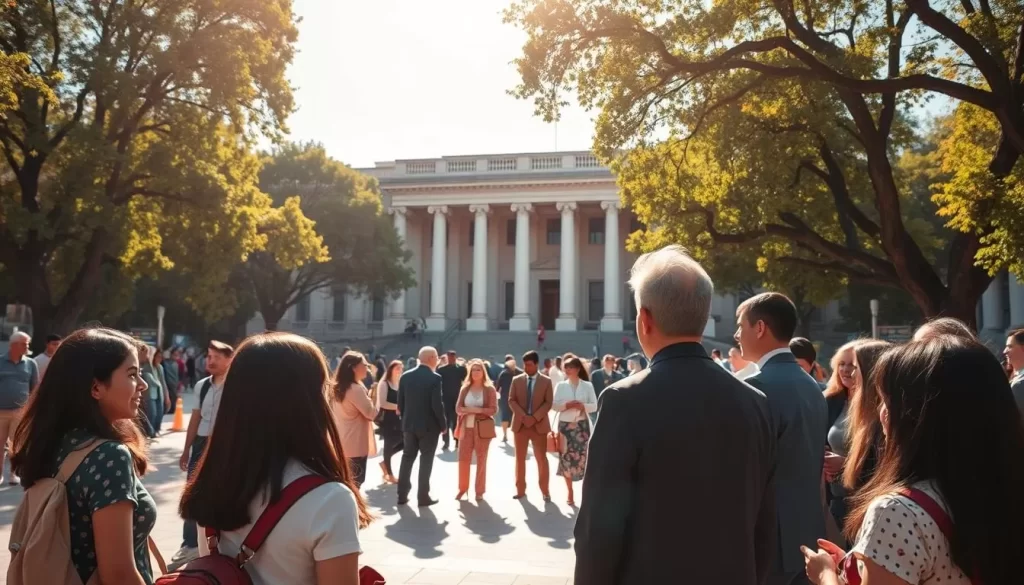
Language Laws and Educational Initiatives
The government has implemented laws to promote Standard Chinese while preserving local dialects. Educational programs focus on bilingual instruction, ensuring students are fluent in both. Over 200 bilingual schools now operate, tripling the number since 2000.
Funding for language education has increased significantly, with over 100 million RMB invested from 2010 to 2020. This investment supports the publication of minority language materials, which has grown by 40% in recent years.
Autonomous Region Policies and Their Impact
Policies in the autonomous area emphasize linguistic inclusivity. Government documents are now published in both Standard Chinese and local dialects, with 20% of materials in the Hui language. This approach fosters a sense of community while maintaining national unity.
Local media has also seen a 50% increase in the use of minority languages over the last decade. This trend reflects the government’s commitment to preserving cultural heritage while promoting modern communication.
| Policy | Impact |
|---|---|
| Bilingual Education | Increased fluency in both Standard Chinese and local dialects |
| Funding for Language Programs | Growth in minority language publications and materials |
| Inclusive Government Documents | Enhanced linguistic inclusivity and community engagement |
Ethnic Diversity and Multilingual Communities in Ningxia
Dive into the vibrant tapestry of ethnic diversity and multilingual traditions that define this unique area. The region is home to a rich mosaic of cultures, each contributing to its linguistic and social fabric. From the Hui to smaller ethnic groups, the interplay of languages and traditions creates a dynamic community life.
The Role of the Hui and Other Ethnic Groups
The Hui ethnic group, making up roughly 36% of the population, plays a significant role in shaping the linguistic landscape. While they primarily speak Mandarin, their dialect incorporates Arabic and Persian influences, reflecting their cultural heritage. This blend of languages enriches the region’s linguistic activity and fosters a sense of identity.
Other ethnic groups, such as the Manchu and Uygur, also contribute to the linguistic diversity. Together, these communities create a multicultural environment where multiple languages thrive. This diversity is a testament to the region’s pluralistic heritage and its ability to harmonize different traditions.
Cultural Practices and Community Language Use
Cultural practices, such as festivals and religious events, highlight the role of language in community life. For the Hui, Arabic is a vital language of faith, used in daily communication and religious practices. These traditions not only preserve linguistic heritage but also strengthen community bonds.
At the social level, language use varies between urban and rural areas. In cities, Standard Chinese dominates, while rural communities often retain traditional dialects. This duality reflects the region’s ability to balance modernity with cultural preservation.
“Language is the soul of a culture, carrying its history, beliefs, and identity.”
| Ethnic Group | Language/Dialect | Cultural Contribution |
|---|---|---|
| Hui | Mandarin with Arabic influences | Religious and cultural festivals |
| Manchu | Mandarin | Traditional crafts and arts |
| Uygur | Uygur language | Music and dance traditions |
Understanding the interplay between ethnic identity and language development offers insight into the region’s cultural richness. For more on how these multilingual communities thrive, explore the link provided.
The Role of Standard Chinese and Minority Languages
Language plays a pivotal role in shaping cultural identity and fostering unity in diverse communities. In the Hui Autonomous Region, this balance is particularly evident. Standard Chinese, or Putonghua, serves as the lingua franca, while minority languages retain their cultural significance.
Mandarin Chinese as the Lingua Franca
Standard Chinese is the cornerstone of communication across the region. It is widely used in education, media, and government, ensuring unity and accessibility. Schools emphasize its teaching, preparing students for national and global opportunities.
However, the preservation of minority languages is equally important. Local dialects, such as those spoken by the Hui community, are integral to cultural identity. These languages are often used in daily conversations and community events, reflecting the region’s rich heritage.
Balancing Dominance and Preservation
Efforts to balance Standard Chinese with minority languages are ongoing. Educational programs promote bilingualism, ensuring students are fluent in both. This approach supports cultural preservation while fostering national unity.
Local policies also play a crucial role. Government initiatives fund the publication of minority language materials and support community events that celebrate linguistic diversity. These efforts highlight the importance of linguistic identity in a multicultural society.
“Language is the key to the heart of culture.”
| Language | Role |
|---|---|
| Standard Chinese | National unity, education, and media |
| Hui Dialect | Cultural identity and community events |
| Other Minority Languages | Heritage preservation and local traditions |
Understanding this balance is essential for continued study and cultural preservation. For more insights into how these multilingual communities thrive, explore this detailed resource.
Economic Development and Language Integration
Economic growth and language practices are deeply intertwined in this region. Over time, activities like agriculture, trade, and winemaking have shaped how communities communicate. These industries not only drive the economy but also influence the evolution of local dialects and languages.
Influence of Agriculture, Trade, and Winemaking
Agriculture has long been a cornerstone of the local economy. Extensive irrigation projects have transformed the landscape, making it a hub for farming. This has led to increased interactions between rural and urban areas, fostering language integration.
Trade has also played a significant role. The region’s strategic location has made it a key player in cross-border commerce. This has introduced new linguistic influences, blending traditional dialects with modern communication styles.
Winemaking is another feature of the region’s economy. The growing wine industry attracts global attention, creating opportunities for cultural exchange. This has encouraged the use of Standard Chinese in business while preserving local dialects in community settings.
Urban Centers and Language Integration
Urban centers like Yinchuan are at the forefront of language integration. These cities serve as hubs for education and business, promoting the use of Standard Chinese. Schools and workplaces emphasize bilingualism, ensuring fluency in both national and local languages.
Economic development zones in these areas further support this trend. Government investments in infrastructure and technology have created a dynamic environment where language and culture thrive.
“Economic progress and cultural preservation go hand in hand, shaping the future of language use.”
| Economic Activity | Impact on Language |
|---|---|
| Agriculture | Increased rural-urban interactions |
| Trade | Introduction of new linguistic influences |
| Winemaking | Global cultural exchange and bilingualism |
Understanding this connection offers valuable insights into how economic development supports cultural activities. For more on this topic, explore this detailed resource.
Modern Communication and Global Cultural Exchange
Modern technology is reshaping how languages evolve and connect communities globally. From social media to streaming platforms, digital tools are transforming the way we communicate. This shift is particularly evident in regions with rich cultural histories, where ancient traditions meet contemporary practices.
Digital media plays a significant role in preserving and promoting local languages. Platforms like YouTube and TikTok allow younger speakers to engage with their heritage in new ways. This blend of old and new ensures that cultural identity remains vibrant in the 21st century.
Technology, Media, and Linguistic Growth
Social media has become a powerful tool for language preservation. Communities use these platforms to share stories, music, and traditions. This not only keeps languages alive but also introduces them to a global audience.
Educational apps and online courses are another way technology supports linguistic growth. These resources make it easier for members of younger generations to learn and practice their native languages. This is especially important in regions where traditional dialects are at risk of fading.
“Technology bridges the gap between generations, ensuring that languages thrive in a digital world.”
Global cultural exchange also plays a key role. Partnerships between countries foster mutual understanding and respect. For example, the Wisdom House International Culture Communication Group has translated over 1,400 Chinese books and TV series into Arabic, promoting cultural ties between regions.
| Technology | Impact on Language |
|---|---|
| Social Media | Preserves and promotes local dialects |
| Educational Apps | Supports language learning for younger speakers |
| Streaming Platforms | Introduces cultural content to a global audience |
As we move further into this century, the interplay between technology and language will continue to shape our world. By embracing these tools, communities can honor their heritage while building connections across borders.
Conclusion
The linguistic heritage of this area reflects a unique blend of history, culture, and modern policies. From ancient scripts to contemporary dialects, the region’s languages tell a story of resilience and adaptation. The balance between Standard Chinese and local speech highlights the importance of preserving cultural identity while fostering unity.
Government initiatives have played a key role in promoting bilingual education and supporting minority languages. These efforts ensure that traditions remain alive while integrating modern communication tools. Understanding this balance is essential for appreciating the cultural richness of the People Republic China.
For those interested in exploring further, the genetic study of the Hui population offers deeper insights into their cultural and linguistic evolution. This research underscores the importance of cultural diffusion in shaping the region’s identity.
By embracing both tradition and modernity, the area continues to thrive as a symbol of linguistic diversity. This balance not only preserves heritage but also paves the way for future growth and understanding.
The above is subject to change.
Check back often to TRAVEL.COM for the latest travel tips and deals.
